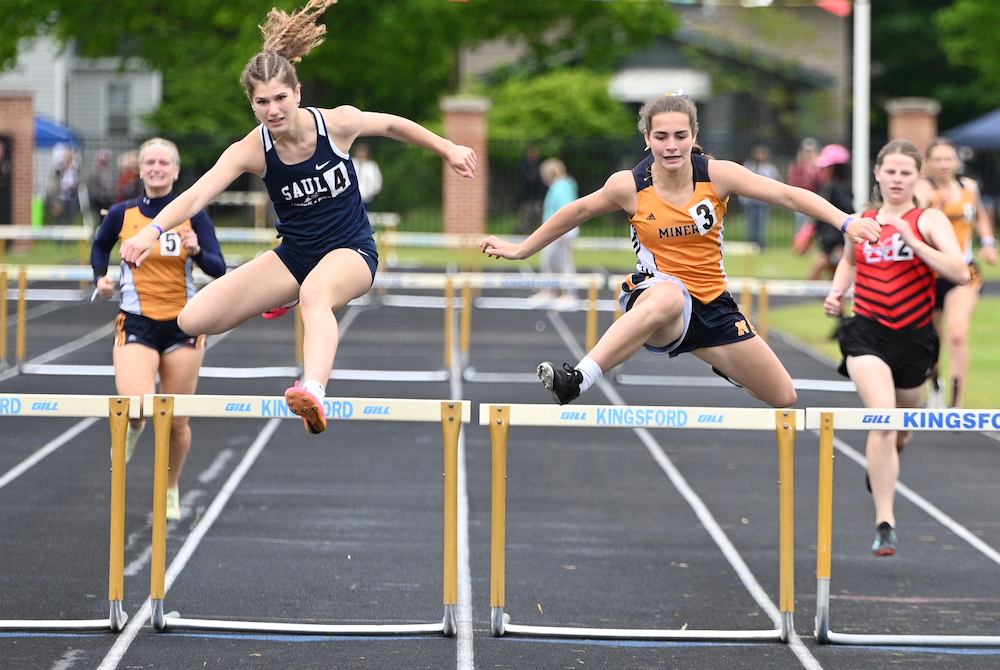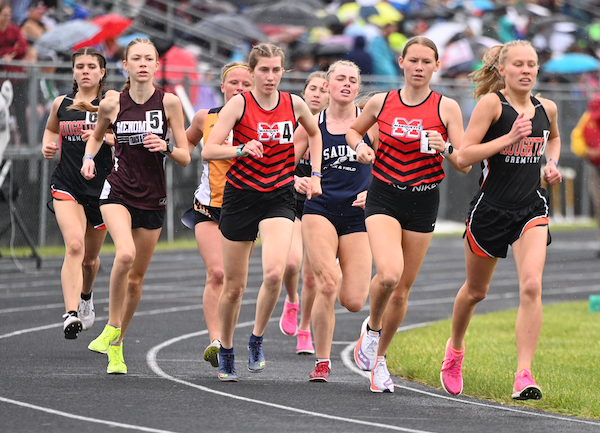
Keep on Coaching
February 1, 2013
By Geoff Kimmerly
Second Half editor
A few weeks ago, I finally got my first chance this season to watch a friend coach his basketball team. After guiding some others at the lower levels, this is his first time running the varsity – something he wasn't sure he wanted to do with a 1-year-old just learning to walk, but a challenge he ended up taking on to the benefit of all those involved.
Simply put, he’s good. I've seen a lot of teams and a lot of coaches over the past 15 years, and although I wouldn't know much of what to do if I were walking the sideline, I felt pretty qualified in telling him I was impressed – even if he didn't buy that I was offering an unbiased opinion. The best news is he’s gone from not sure about this a few months ago to talking about next season.
We know, at least anecdotally, that coaching continues to get more challenging. The time commitment has grown substantially to make running a program a year-round endeavor in a lot of sports at a lot of schools.
That commitment – especially for coaches with children of their own – was a main reason referred to in a New Haven Post-Chronicle story Saturday that noted 23 football coaching openings in Connecticut at one point this offseason. That state has 146 football teams – meaning roughly 15 percent will have new leaders this fall.
And that got me thinking about my friend, about how glad I am he’s given this a shot, and how I've seen so many others either not do so, or not stick around long despite having some pretty nice success.
A study published last winter in Interscholastic Athletic Administration magazine – a product of the National Interscholastic Athletic Administrators Association – noted some predictable results of a study that sought to determine the biggest challenges faced by first-year high school coaches.
The toughest according to the study was balancing the demands of coaching and teaching, experienced by nearly half the respondents – 98 percent of which coached high school teams and 81 percent of which are teachers.
The next six reasons all were noted by at least 30 percent of those in the study – personal fatigue, securing community support, securing and caring for facilities and equipment, parental contact, keeping non-starting players motivated, dealing with schedule interruptions and motivating athletes to achieve consistent, peak performance.
Nothing there is earth-shaking, and most if not all of these challenges are faced by high school coaches regardless of how long they've been in the field. But I got a little more perspective from some of the 32 items that ranked as least challenging to the first-year leaders – keeping in compliance with state and league regulations, dealing with substance abuse issues, teaching sport skills and creating a positive team atmosphere – things that seem most important, and yet appear to be easiest to do. I’m not sure what that tells us – but I think it tells us something.
Click to check out the entire three-page breakdown of the study, plus the researchers’ recommendations to remedy some of what first-year coaches face.
Giving back to Saginaw
I love reading about high-level athletes – like a star-studded group of alums from Saginaw – giving back to where they got their starts.
Pittsburgh Steelers star LaMarr Woodley made a big impact before the start of this school year by donating $60,000 to cover all participation fees for athletes in his former school district. The Saginaw News’ Hugh Bernreuter writes today about how Woodley (Saginaw High), the Philadelphia 76ers’ Jason Richardson (Saginaw Arthur Hill) and former Oakland Raiders standout Stu Schweigert (Saginaw Heritage) have combined to give more than $865,000 back to their home communities.
Bernreuter also mentions the non-monetary contributions of the Golden State Warriors’ Draymond Green (Saginaw High) and former Indianapolis Colts receiver Blair White (Saginaw Nouvel).
Click to read more about it.
Quote(s) of the Week
While rifling through more papers on my desk, I found an article from the Washington Post from Sept. 2011 titled “How high school sports save our schools.” I was drawn to it in part because I spent more than a decade in a newsroom, and it was a piece by a reporter covering education who instead of reporting on school boards and the like, delved into the importance of interscholastic athletics to education as a whole.
He spoke of how participation continues to grow even as resources dwindle, and of data supporting that extracurriculars like sports are more effective than academic classes in teaching leadership, teamwork, time management and “other skills crucial for success in the workplace.” Later, he mentioned a study noting that those who participate in extracurriculars earned more a decade later.
Click here to read the entre piece. These passages struck me most.
“Coaches might be the only faculty members still allowed by our culture and educational practice to get tough with students not making the proper effort. They have the advantage of teaching what are essentially elective non-credit courses. They can insist on standards of behavior that classroom teachers often cannot enforce because the stakes of dismissing or letting students drop their courses are too high. …
“Students do better in activities they choose. If we provide more of them, led by committed adults … that can make a difference. We know the bad news about education. Dropout rates are high. Achievement scores are stagnant. But sports participation is going up, despite pressure to cut it back. Let’s cheer about that and look for a way to draw in more students.”

Sault Ste. Marie Girls End 23-Year Championship Wait with UPD1 Win
By
John Vrancic
Special for MHSAA.com
June 2, 2024
KINGSFORD — The Sault Ste. Marie girls made a statement here Saturday while earning their first Upper Peninsula Division 1 Track & Field Finals title since 2001.
Sault scored 117 points, followed by Negaunee with 94 and Gladstone at 65.
The Blue Devils placed 1-2 in discus, won by senior Katie Anderson at 115 feet, 3 inches, with junior Annabelle Fazzari uncorking a runner-up toss of 101. Freshman Ahnaka Oshelski added a first in the 300 hurdles in 48.29 seconds, followed by Negaunee freshman Sadie Rogers (48.30) and Marquette freshman Chloe Jackson (49.56).
Oshelski also helped the Blue Devils take the 800 relay (1:49.55).
“Our handoffs were a little rough, but I just ran as fast as I could (in the 800),” freshman Grace Mayer said. “It feels great to come away as U.P. champions.”
Mayer was also part of the winning 1,600 relay, clocked at 4:17.4.
Fazzari provided the Blue Devils with a second place in the 100 hurdles (17.07) and a third in shot put (34-0).
Rogers won the 100 hurdles in 16.65 seconds, and Negaunee classmate Keira Waterman placed first in the 400 (59.23) and 800 (2:28.2).
“I didn’t really know what to expect here today,” Rogers said. “I had a good start and just pushed myself real hard. I could hear the crowd. It was very important for me to win this one. I also thought my chances in the 300 were pretty good. I knew I had to push it.”
 Gladstone set a UPD1 Finals record in the 400 relay at 50.78, shaving basically ⅓ of a second off the previous record (51.11) run by Marquette three years ago.
Gladstone set a UPD1 Finals record in the 400 relay at 50.78, shaving basically ⅓ of a second off the previous record (51.11) run by Marquette three years ago.
The Braves were led by junior Jacie Tuljus, who anchored that relay, won the 100 (12.75) and 200 (26.85) and was runner-up to Waterman in the 400 at 1:02.54.
“My starts were slow, but what we did in the 400 relay was good for today” Tuljus said. “Everybody was pretty hyped. We’re happy with it. Overall, I’m happy with the way everything went.”
Marquette sophomore Ella Fure took the 1,600 (5:31.33), followed by Houghton sophomore Tessa Rautiola (12:13.39) and Marquette junior Monet Argeropoulos (5:37.27).
Rautiola then captured the 3,200 (12:13.39), followed by Fure (12:13.46) and Argeropoulos (12:23.91)
“I just wanted to have fun and asked God to pull me through,” Fure said. “I knew if I just trusted God, He would get me through. My mom is pretty sick and couldn’t be here. I just wanted to do this for her.”
Rautiola also helped the Gremlins win the 3,200 relay in a season-best 10:10.38.
“Our school record is 10:08,” she said. “We didn’t get the record this year, although we’re absolutely happy we won. There was miscommunication in the exchange zone which created some confusion. We weren’t in the proper place for one of our handoffs. Otherwise, I think we would have had it.”
Ishpeming Westwood junior Faith Spiroff became a double winner, taking high jump (5-0) and long jump (16-4½).
Other winners were Manistique senior Danielle Lund in shot put (38-7¾) and Calumet senior Caitlyn Strom in pole vault (10-0), where she edged Westwood junior Lexi Olson on a tie-breaker. Houghton freshman Amy Sziber won the adaptive shot put, 100 and 200 events.
PHOTOS (Top) Sault Ste. Marie's Ahnaka Oshelski, left, edges Negaunee's Sadie Rogers by one hundredth of a second to capture the 300 hurdles title Saturday. (Middle) Houghton's Tessa Rautiola (2) leads the 1,600 with Marquette's Ella Fure (1) and Monet Argeropoulos (4) following close behind. Fure won the race, with Rautiola taking second. (Click for more from Cara Kamps/RunMichigan.com.)

